A simple observation and the subsequent question in the forum of Wein-Plus kept me busy: "At the moment, I am again noticing the beautiful scent of lime blossoms outside. This scent is also listed under the topic of floral/floral when smelling wine. Which grape variety or, better still, which wine has these aromas?" I'm beginning to wonder!
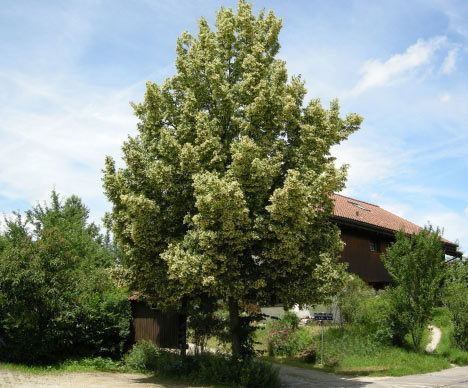
|
| The majestic lime tree in front of the house creates a special aura |
In front of my window is a magnificent lime tree in blossom. For days, the slightly sweet, aromatic scent has permeated my writing room. Memories of our youth, when as boys we climbed the linden trees to pick blossoms and earn a few bucks; of the tea my mother brewed when I had a sore throat, a tummyache, a cough and I don't know what; of a beautiful spring day at Lake Attersee in Austria, where we sat together over fish and wine before a degustation (theme: Languedoc) and a sweet linden scent drowned out the slightly musty smell of stagnant water. Homesickness or wanderlust?
I grew up by a lake, I love cooked trout, "trout blue", and I particularly enjoy drinking a fresh, fruity, spicy white wine with it. A winemaker from Burgenland also took a seat at our table at the Linde on Lake Attersee. Herbert Lassl from Sigleß. We talk about Austrian wine, the witches' hills, the Hallstatt culture, Austria's special grape varieties, the difficulties of the winegrowers, the beauty of the landscape and (because we are sitting by a beautiful lake) of course about Lake Neusiedl "with the best climate in the world for the development of "Botrytis cinerea" or noble rot".
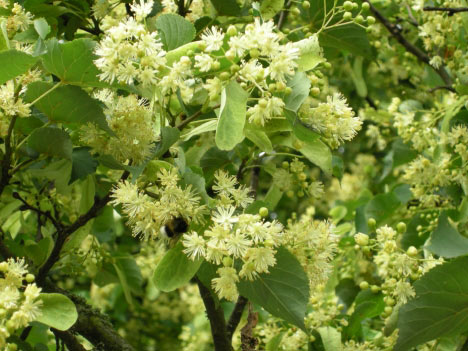
|
| The lime blossom develops a full% sweet% intense fragrance |
And of all things, that's when it happened. I begin to feel ashamed: What do I know about Austrian wine regions, what do I know about Austrian wines? And I am seized by wanderlust. Burgenland.
Burgenland is not that far away - but it is a good three hundred kilometres further west, almost 900 kilometres from my home.
We drink a white wine with the fish, which the winegrower has brought along. I'm not quite sure whether it was a Grüner Veltliner or a Welschriesling. In any case, it goes very well with the trout. And again I start to think. Welschriesling? There is something nutty about the wine - or have I only read this and am now repeating the impression disguised as my own experience? In any case, acidity and fruit dominate. And this greenish colour: was it a Grüner Veltliner after all? I don't know any more, the aroma experience is too far in the past.
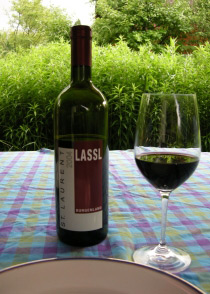
|
| St. Laurent: powerful% fruity% velvety and full-bodied |
The winegrower from Burgenland brought a few more bottles in addition to the white. Six reds from his vineyard, from the blue Zweigelt "Primus" to the cuvée "Terzo" 2000. The "Terzo" is his top cuvée from Blaufränkisch, Zweigelt and Cabernet Sauvignon, aged in oak barrels. An interesting variation on the traditional Bordeaux assemblage. But we won't drink any of that now. Languedoc is the topic.
The cuvée "Ultimo", on the other hand, we taste the next day, in private, on a little tour d'horizon through Austria's wine culture: Blaufränkisch and Zweigelt. I liked the cuvée, my interest was aroused. Wanderlust!
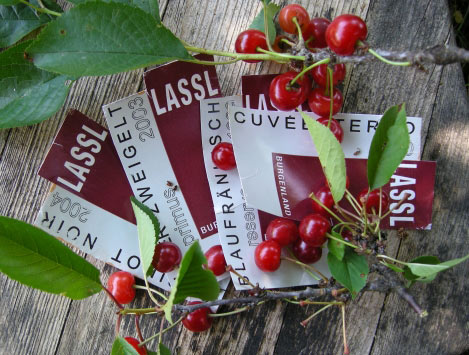
|
| The aroma of the Vistula is omnipresent in the tasted wines from Burgenland |
I packed the remaining five wines, carried them in my hand luggage on the train and promptly forgot them in the cellar later.
The fragrant Lindenbaum jogged them awake in my memory. Instead of a 1994 or 1997 Bordeaux, today we have the 2004 St. Laurent from the Lassl house in Burgenland: the exact name "Jungfernlese". We sit behind the house in the garden, waiting for tender meat from the grill and the roast potatoes. There is nothing to see and nothing to smell of the lime tree here.
I have a hard time with the strong, fruity aromas of the St. Laurent. My wife says laconically: it reminds me of a Swiss country wine, a Pinot, with a somewhat "different" taste: sour cherry, sour cherries. Indeed, the memory rises up in me again: the rascal from Lake Zurich who nibbles the forbidden fruit directly from the trees and then comes home with a terrible stomachache: homesickness!
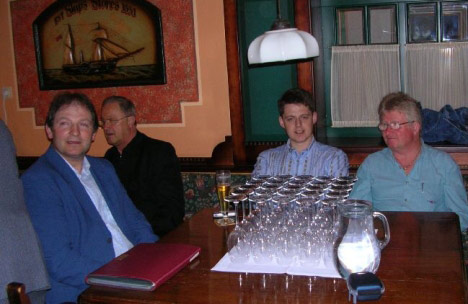
|
| Tasting in Attersee. Far right Herbert Lassl% Winemaker from Sigleß in Burgenland |
I go into my garden, there is a cherry tree there too, is it sour cherry? I taste the unripe red fruit. Yes, these aromas are also in the St. Laurent.
But now it's time for the Zweigelt. My wife again: "So this is the famous Zweigelt, I don't think I've ever drunk it before!" And my comment after the first sip: "Heavens, this sour cherry aroma again, but much softer, lighter, smoother than in the St. Laurent. No wonder, the Blaue Zweigelt is a hybrid of St. Laurent and Blaufränkisch. "A ladies' wine," I scoff and promptly receive the much more competent answer: "the wine reminds me of Diolinoir, a new variety from the Valais!"
In fact, we also find the warmth, the "vinous" aromatics, the elegance and the round body of a Diolinoir in Zweigelt! This may be wrong, but it is certainly much more substantial than my flippant remark.
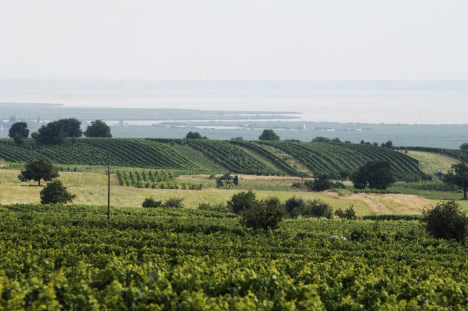
|
| Vineyard landscape on Lake Neusiedl |
It does not stay that way. The next wine we open - it is already dark and the barbecue has long since been eaten - is the third in the group: Blaufränkisch. According to the wine glossary, Charlemagne already appreciated this grape variety. It makes you long for faraway places: yes, the Blaufränkisch country that opens up so wonderfully to the Hungarian lowland plain. In any case, what we have in the glass - a typical Austrian from Burgenland - reveals a lot of independence and self-confidence, also a lightness, and wonderful fruit aromas, a dark ruby red colour and a - for the Cabernet Merlot drinker - peculiar, powerful bouquet that triggers even more wanderlust in me. Today, a day later, the scent of lime ("fleur de tilleul") floods into my room again. I plan to drink Lassl's two rather "international" wines this evening, the Pinot noir, 2004, "Jungfernlese" and the Cuvée "Terzo" 2000. Will the experience of the first encounter be repeated? Compared to yesterday, the wines now seem more familiar to us: Cabernet and Pinot are familiar to us. And yet: they are different from all the Pinots we know, from all the varieties of Cabernet assemblages. Or is it only because yesterday's experience lives on, summarised like this: powerful, round, pronounced aromas and strong spiciness?
In the meantime, I have diligently re-tasted all five wines while writing this column, without spitting. And now I know that Austrian wine enjoyment is not only possible in faraway places, but also at home, under the blossoming linden tree. Homesickness combined with wanderlust?
Yours sincerely, Peter
(Züllig)